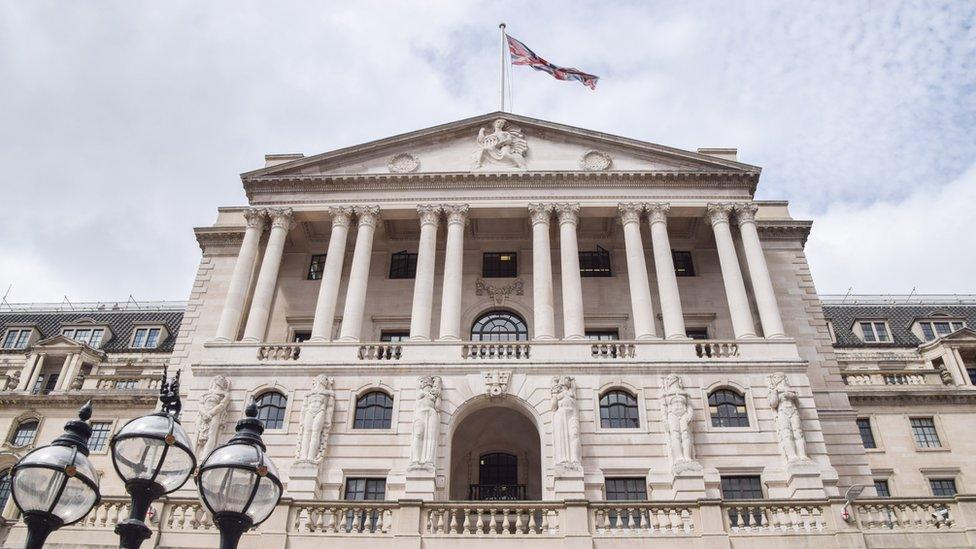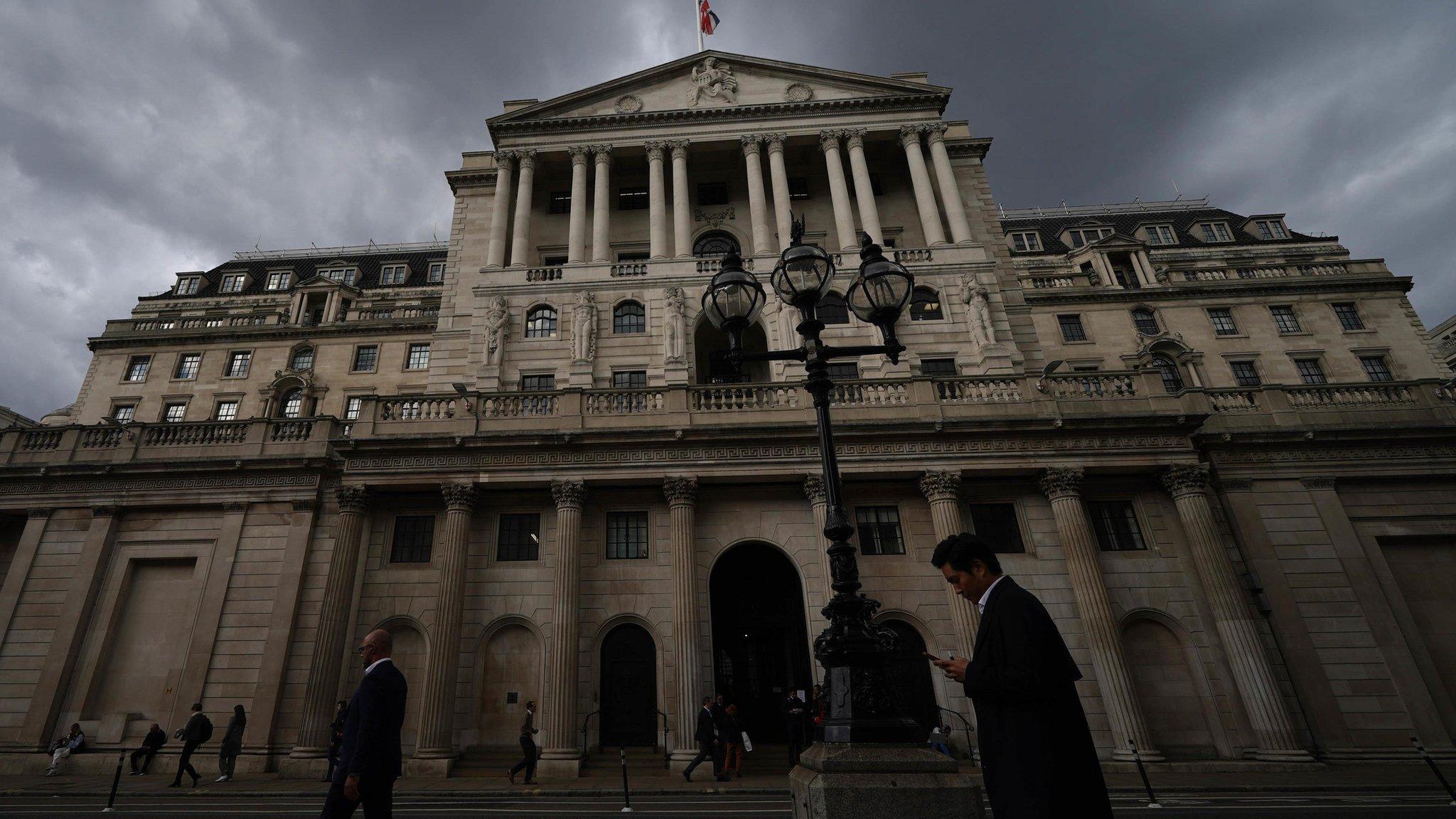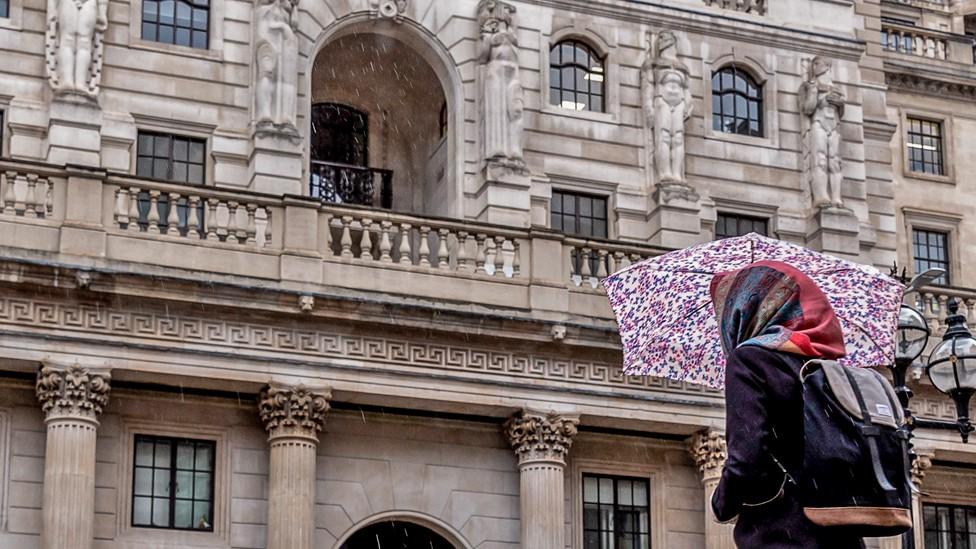Bank of England boosts plan to calm market turmoil
- Published
- comments

The Bank of England has announced new measures aimed at ensuring an "orderly end" to its emergency bond buying scheme which was introduced to stop a collapse of some pension funds.
The Bank will increase the amount of bonds it can buy in the final week of the scheme, which ends on Friday.
It will also introduce extra support to ease future strains on pension funds.
The Bank initially stepped in after the government's mini-budget sparked turmoil on financial markets.
With the deadline for the Bank's bond-buying programme fast approaching, there have been concerns volatility would return once the scheme ends.
However, Russ Mould, investment director at AJ Bell, said the Bank was taking the approach of "talking loudly and carrying a big stick" in its attempt to calm concerns,
He said the measures are "designed to reassure pension managers - and pension holders - that help will be provided".
He added that the Bank's announcement reaffirms that the bond purchases were a short-term measure and "it remains committed to withdrawing monetary stimulus and tightening monetary policy as it fights inflation".
Stability fears
The mini-budget - which was announced on 23 September - pledged £45bn of tax cuts as part of a plan to boost economic growth, but the level of government borrowing required shocked investors who questioned the sustainability of the public finances.
In the aftermath of the statement, the pound hit a record low and investors demanded a much higher return for investing in government bonds, causing some to drop sharply in value.
Certain types of funds in the pension industry, which invest in bonds, were forced to start selling, sparking fears of a fresh market downturn.
On 28 September, the Bank stepped in to buy government bonds saying its decision was driven by concern over "a material risk to UK financial stability".
It said it would buy up to £65bn bonds, with a limit of £5bn a day.
So far, the Bank has bought only around £5bn bonds in total under the programme and in its latest announcement, external it said stood ready to increase the size of its daily purchases. On Monday, it doubled the limit to £10bn.


This intervention is about a transition off the Bank of England emergency support offered in government bond markets, in the aftermath of the mini-budget.
The Bank of England is trying to leave no stone unturned in making sure the withdrawal of this support occurs in an orderly manner. But the Bank is also committing to the timetable to phase out the support this week. Some in the markets had anticipated it would need to be extended.
The Bank is demonstrating that this intervention is not intended to limit the rise in government costs, but instead was a temporary and targeted effort aimed at maintaining financial stability.
This is the message heard in markets on Monday, with effective borrowing costs, or yields, on government debt on the rise again. These rates were over 4.5% for borrowing over 30 years and five years.
The big picture is this: if the Treasury wants to bring down now rising government borrowing costs - which have an effect on mortgages and business lending too - it is up to it to present a credible set of tax and spending plans and independent forecasts, which are now promised for the end of October.
The forecasts and the plan will now feed into the Bank of England's interest rate decision in early November.
The Bank of England's intervention was a temporary bridge over a specific crisis. The solution here is for the government.

The government borrows money to fund its spending plans by selling bonds, or "gilts", to investors such as pension funds and big banks on international markets.
But a collapse in the price of those bonds in the aftermath of the mini-budget was forcing some funds to rush to sell bonds further forcing down the price.
If that process had continued, there was a risk that those pension funds could have got to a position where they could not pay their debts.
In its latest statement, the Bank said there had been "substantial progress" in addressing the financial problems facing these funds, which had faced the prospect of having to make forced sales of £50bn of bonds.
As well as increasing the daily limit on bond purchases this week, the Bank also announced a further measure to help the funds affected by the recent market volatility.

Under the measure, these funds will be able to use a wider range of assets - such as company bonds - to access money to help meet any short-term financial demands.
It is hoped this means these funds will not be forced to sell government bonds to raise cash, which was what they had to do in the immediate aftermath of the mini-budget.
This measure will continue after the emergency bond-buying programme has finished.
Before the mini-budget, the yield on government borrowing over a 30-year period stood at about 3.7%. The yield is effectively the interest rate.
After the mini-budget it jumped to 5.1% until the Bank's intervention pushed the rate back down. However, in recent days it has crept back up again to around 4.5%.
Related topics
- Published6 October 2022
- Published28 September 2022

- Published28 September 2022

- Published12 October 2022

- Published28 September 2022
